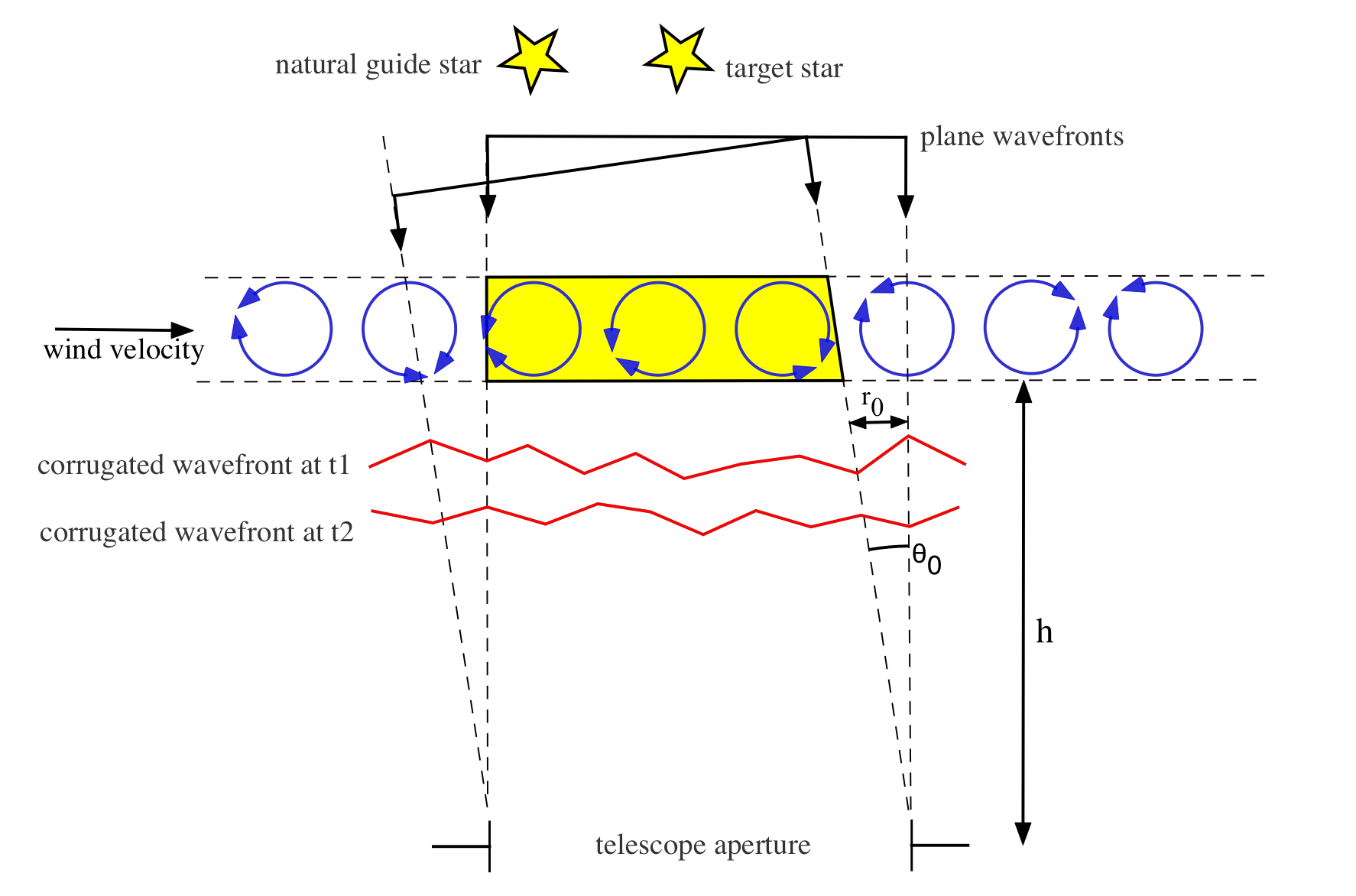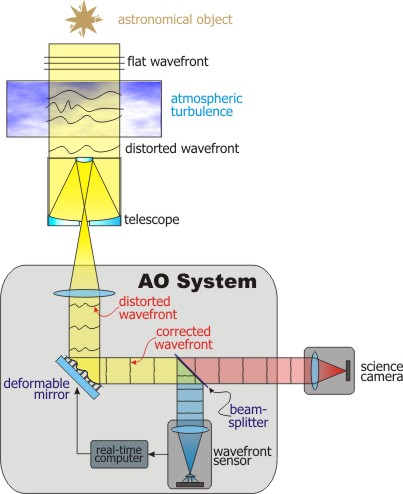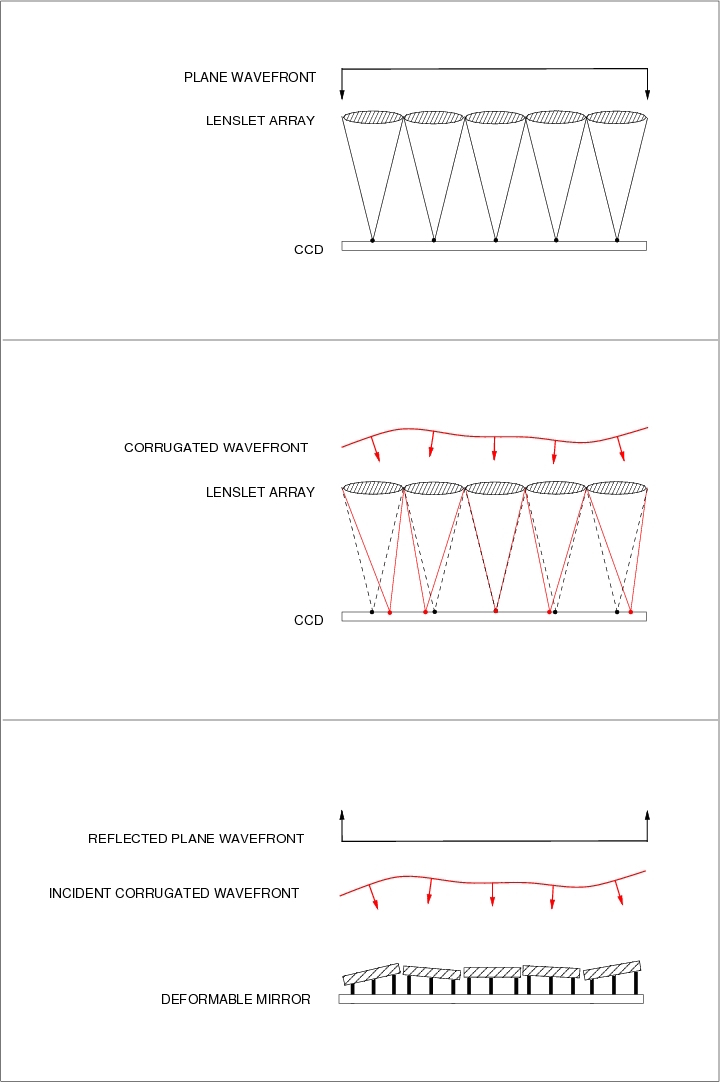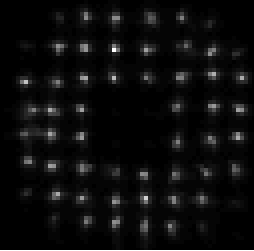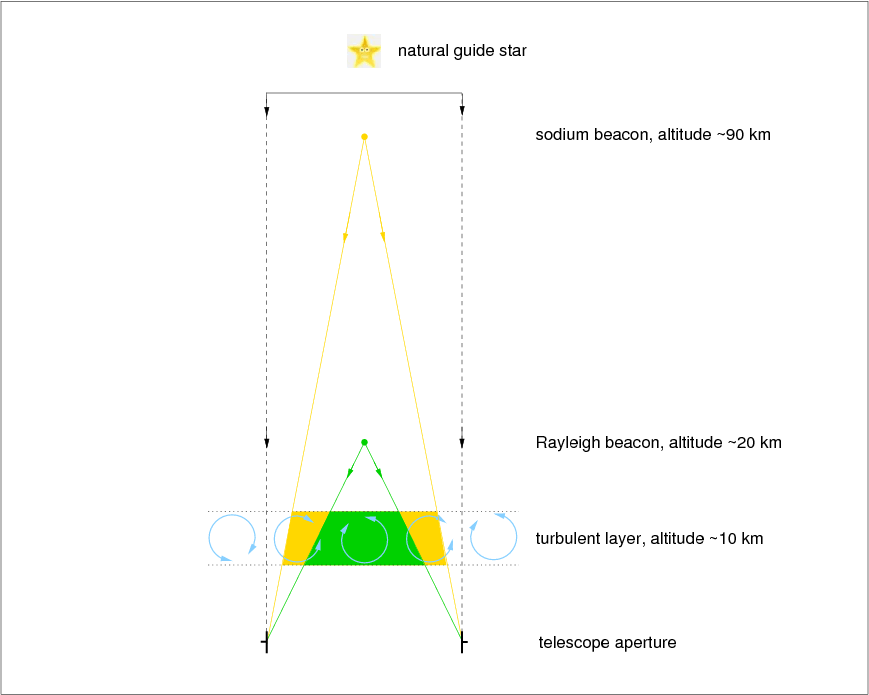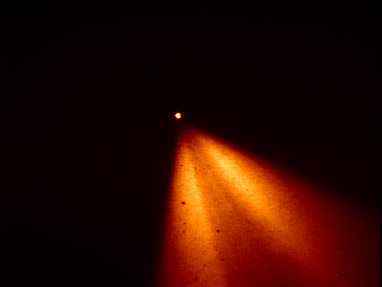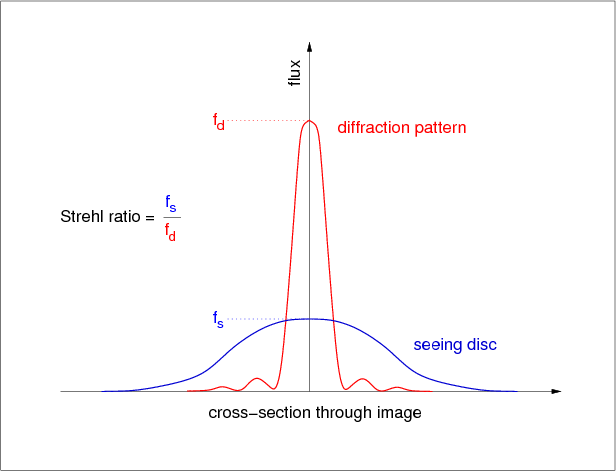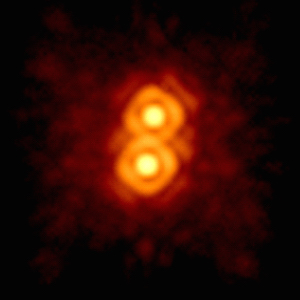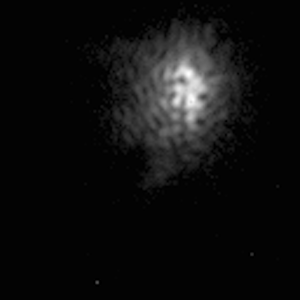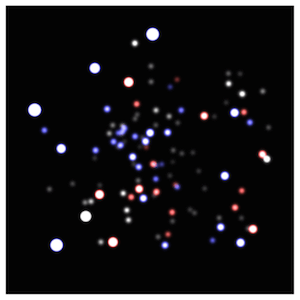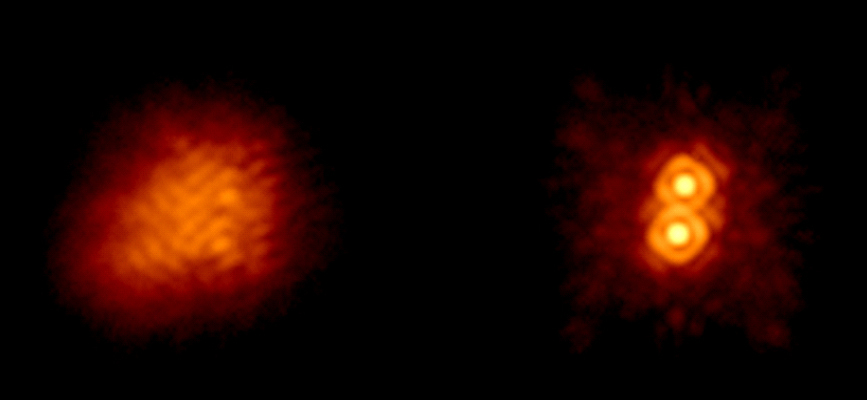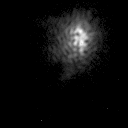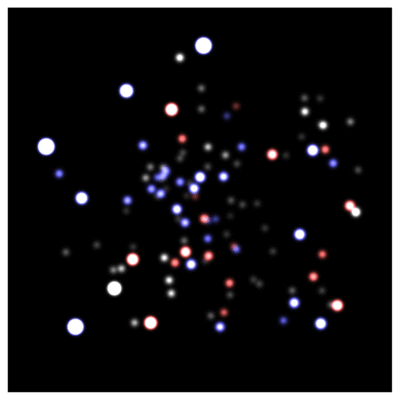In the first lecture, we saw how the seeing was the dominant factor controlling image quality for telescopes of moderate size and larger. Whilst active optics counteracts the effect of gravity and other deformations on the telescope mirrors, adaptive optics is a way of correcting for seeing, and taking advantage of the potential for improved resolution offered by large telescopes. Before we discuss how adaptive optics works, I will introduce three terms which quantify the effects of turbulence in the Earth's atmosphere on a wavefront propagating through it.
Fried parameter
As we showed in figure 6, turbulence in the atmosphere randomly distorts the plane wavefronts from distant stars. Over a short distance, the corrugated wavefront can be considered approximately planar. The Fried parameter, \(r_0\) - pronounced free-d - indicates the length over which the wavefront can be considered planar. This is shown schematically in figure 61. As we can see from this figure, the Fried parameter is also approximately equal to the size of the turbulent cells themselves.
The larger the Fried parameter, the better the atmospheric conditions. At a good observing site, the Fried parameter has a typical value of \(r_0 = 10\) cm, at an optical wavelength of \(\lambda = 500\) nm. Theoretically, the Fried parameter is predicted to vary with wavelength as \(r_0 \propto \lambda^{6/5}\). Accordingly, the Fried parameter at near-infrared wavelengths (\(\lambda = 2.5 \mu\)m) should be \(r_0 \sim 70\) cm. This expectation is borne out by observations
